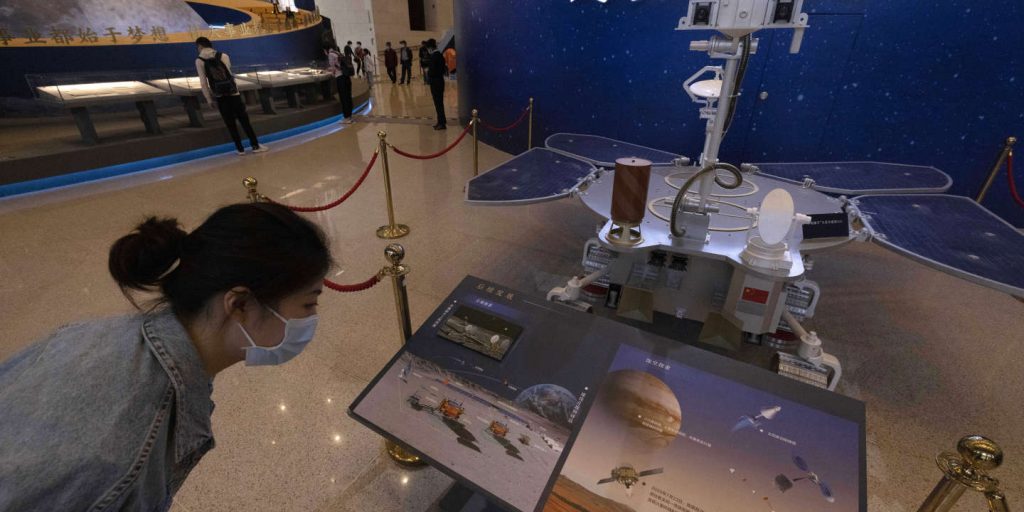
Trompe-l’oeil space match
Editorial “The World.” Although no photographs sent from Mars have yet been confirmed, the Chinese Space Agency has announced that its small portable robot Zhurong has successfully landed on the red planet on Saturday, May 15th. The technical prowess is noteworthy, because the entry and brake maneuvering in the Martian atmosphere is a formidable test that only Americans have so far mastered. Chinese President Xi Jinping did not fail to indicate this, with a touch of glory in his congratulations to the expedition leaders, saying they would leave. “The Chinese footprint on Mars for the first time”, Adding : “The motherland and the people will always remember your extraordinary feats!” “
This success adds to many other successes – the landing of a rover on the far side of the moon in 2019, the return of moon samples in 2020, and the placement of the first element of a space station in orbit in April, which will be re-launched. Manned Chinese Flights – Show how Beijing is investing in space.
An annual budget of $ 10 billion (€ 8.2 billion), several Earth observation satellites, a full range of missiles, a program to explore the Lunar South Pole, a GPS satellite system that competes with the US GPS, European Galileo and Glonass Russian: China has established its position in the second place in the world in space.
Technological delay
From there to believe it is in direct competition with number one – the United States – it’s just a move some have taken. However, the facts warrant more caution: Currently, the two countries are not competing in the same category. On a small budget, NASA has an annual endowment of $ 23 billion and is not the only representative of US space. We must take into account the Chinese successes, certainly remarkable, for what they are: milestones in catching up with technological delay.
The first American astronaut flew in 1961, and he was the first Chinese astronaut in 2003; The United States returned more than 380 kilograms of lunar samples between 1969 and 1972, while China recovered only two kilograms after half a century; NASA first landed on Mars in 1976 with two Viking landers, and its first rover, Sojourner, dates back to 1997; The International Space Station, in which the United States plays a major role alongside the Russians, Canadians, Europeans and Japanese, has been orbiting the Earth since 1998 and is enormous along with the Chinese project; American scientific probes crossed the solar system and some left it … To this really long panoramic picture of the gap between the two countries, we must of course add the twelve Americans who walked the moon during the Apollo program.
Even if the poster is tempting, because it reproduces the geostrategic battle we know about on Earth in the sky, so the space match between the United States and China remains a largely false competition. Nevertheless, the two superpowers have an interest in being seen as direct competitors. Washington in particular uses it to justify an expensive manned lunar program: Donald Trump, who ordered it, couldn’t accept that the first person to return to our satellite was Chinese. Beijing, for its part, is glad to be seen as a true competitor: in boxing, the tin takes as much light as the champ.

“Incurable web evangelist. Hipster-friendly gamer. Award-winning entrepreneur. Falls down a lot.”
